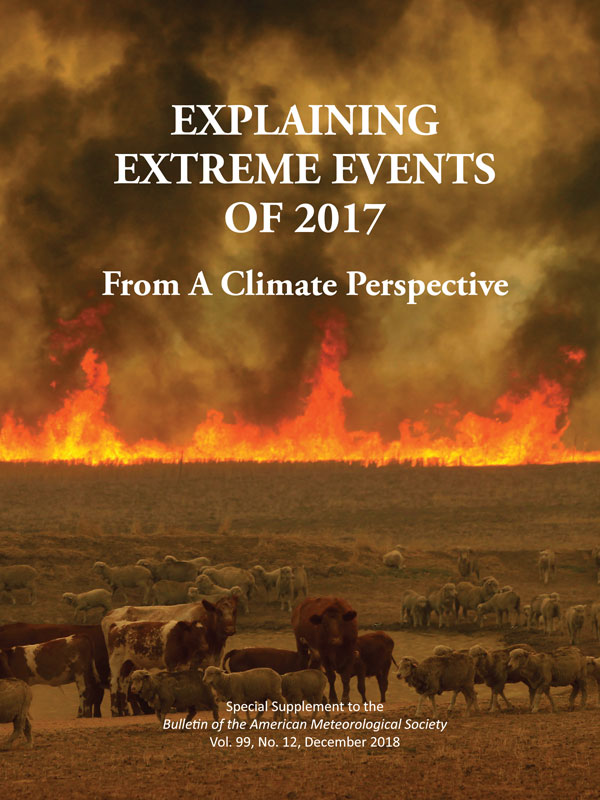Explaining Extreme Events in 2017 from a Climate Perspective
December 20th, 2018
Download by Chapter:
- Hydroclimatic Extremes as Challenges for the Water Management Community: Lessons from Oroville Dam and Hurricane Harvey
- Observations of the Rate and Acceleration of Global Mean Sea Level Change
- Anthropogenic Contributions to the Intensity of the 2017 United States Northern Great Plains Drought
- Attribution of the 2017 Northern High Plains Drought
- The Extremely Wet March of 2017 in Peru
- Contribution of Anthropogenic Climate Change to April–May 2017 Heavy Precipitation over the Uruguay River Basin
- December 2016: Linking the Lowest Arctic Sea-Ice Extent on Record with the Lowest European Precipitation Event on Record
- The Exceptional Summer Heat Wave in Southern Europe 2017
- Examining the Potential Contributions of Extreme “Western v” Sea Surface Temperatures to the 2017 March–June East African Drought
- Risks of Pre-Monsoon Extreme Rainfall Events of Bangladesh: Is Anthropogenic Climate Change Playing a Role?
- The Effects of Natural Variability and Climate Change on the Record Low Sunshine over Japan During August 2017
- Anthropogenic Contribution to the 2017 Earliest Summer Onset in South Korea
- Anthropogenic Influence on the Heaviest June Precipitation in Southeastern China Since 1961
- Attribution of the Persistent Spring–Summer Hot and Dry Extremes over Northeast China in 2017
- Anthropogenic Warming Has Substantially Increased the Likelihood of July 2017–like Heat Waves over Central Eastern China
- Attribution of a Record-Breaking Heatwave Event in Summer 2017 over the Yangtze River Delta
- The Role of Natural Variability and Anthropogenic Climate Change in the 2017/18 Tasman Sea Marine Heatwave
- On Determining the Impact of Increasing Atmospheric CO2 on the Record Fire Weather in Eastern Australia in February


